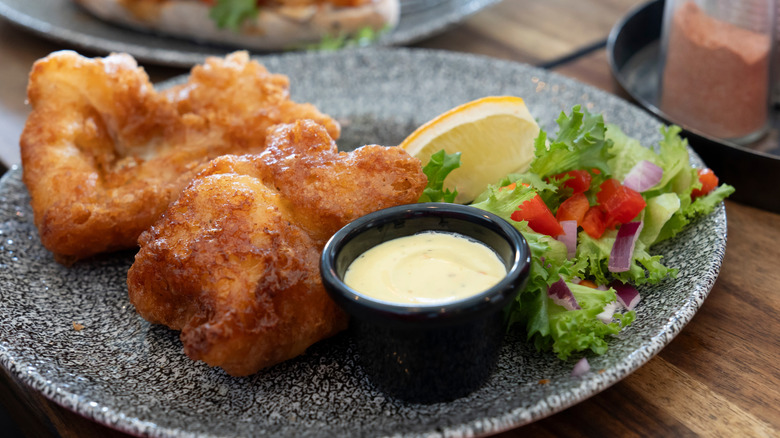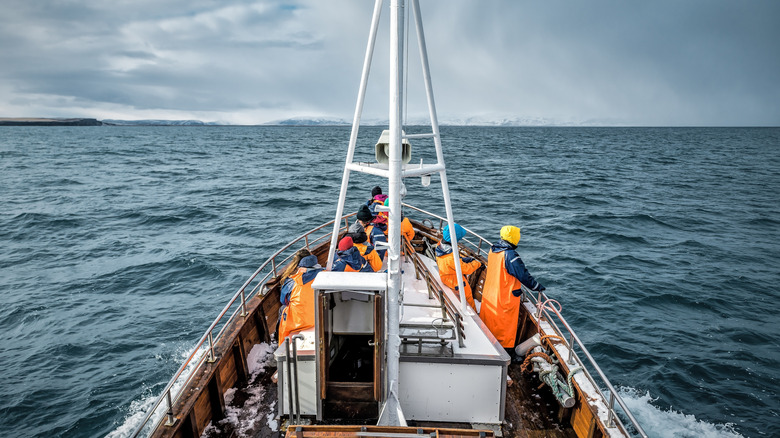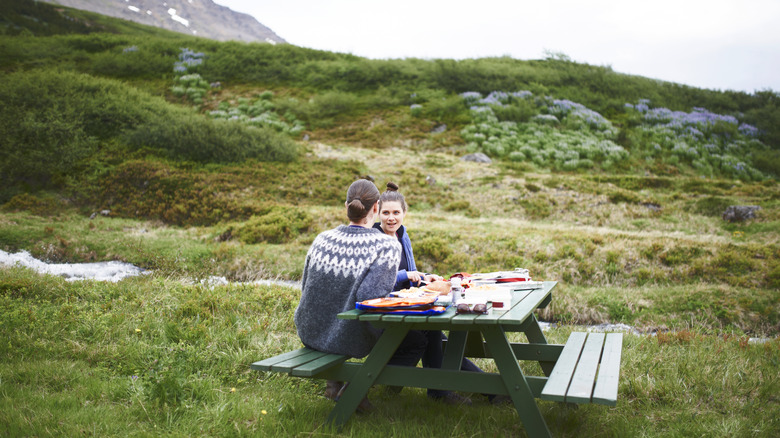How Rick Steves' Protégé Makes Eating In Iceland Affordable Without Sacrificing Flavor
While Iceland is often ranked one of the world's best places to put on your travel bucket list, it has a reputation for being on the expensive side. In fact, entire Reddit threads and lengthy posts by the world's top travel bloggers are dedicated to saving money in Iceland — particularly on food. That said, Cameron Hewitt, Rick Steves' protégé and an excellent traveler writer in his own right, reminded us of an ingenious way to minimize your food budget in Iceland.
Instead of splurging on dinner, make lunch your major meal and order the "fish of the day" or another daily special. According to Hewitt (via Rick Steves' website), lunch usually runs between $20 and $30 without sacrificing quality or flavor exploration — after all, food is a huge part of culture. This allows you to indulge your foodie sensibilities without paying $50 or more per plate, and a big lunch keeps you full for a day of adventuring.
When you hear "Iceland" and "fish" in the same sentence, your mind might immediately jump to hákarl — a fermented shark dish that can only be described as an acquired taste. Although you can find Iceland's national dish in many grocery stores and markets, it's not exactly what we had in mind. You can also enjoy a range of more mild-flavored fish dishes at restaurants across the country.
What to expect from your fish lunch in Iceland
Now that we've assured you hákarl won't be your meal of the day, let's talk about local fish and seafood dishes in Iceland. Look for freshly caught fish like cod, haddock, and plaice — and don't forget to try the Arctic char. Although usually farmed instead of caught in the wild, Arctic char has a mild, buttery flavor and isn't too "fishy." These are the main specialties you'll encounter, but Iceland is home to over 350 species of saltwater fish. Restaurants offer various preparation techniques, ranging from battered fish and chips to pan-seared to stews.
If you're wondering why fish is cheaper than other foods in Iceland (particularly meat), you're not alone. Many goods are imported across the Atlantic, incurring high transportation and customs fees, while only a few companies control the importation of goods. In addition, the market is small (the population of Iceland is less than 400,000 people), so large companies don't see the value of expanding their businesses into Iceland. However, fish are readily available in Iceland's waters, and some fishermen bring home extra catch and sell it at a reduced cost to friends, family, or local restaurants.
Other tips for saving money on food in Iceland
If fish isn't your fancy, there are other ways to reduce your overall food budget while in Iceland. First, Rick Steves has several helpful tips for how to visit Iceland on a shoestring budget, including buying your food in a local grocery store. Once you've decided on your goodies, pack your meal and head out into the country. This way, you can save on food costs while enjoying Iceland's landscapes at a beautiful picnic.
Next, pack your reusable bottle and avoid drinking bottled water while in Iceland. Although drinking from the tap is unsafe in many countries, that's not the case in Iceland. In fact, 95% of the water comes directly from springs instead of reservoirs or aquifers. Not only will drinking from the tap save you money, it's also a healthier and more environmentally friendly alternative to bottled water. For instance, the water is filtered through volcanic rocks and contains no chemicals.
Frequent travelers also recommend digging into a few hot dogs during your trip. Yes, you read that correctly. Iceland is home to some of the best hot dogs in the world, and at an affordable price. Do a quick Google search of your location and enjoy a dog topped with mustard, onions, remoulade (a mayonnaise-like sauce), and ketchup. We also recommend choosing a hotel with a breakfast spread, buying alcohol at a duty-free store, and hitting up the local happy hours.


